Blurry vision is common
Any number of things can cause blurry vision, most of them temporary and easily treatable. “All of us as we age lose our ability to change the focus of our eyes up close,” says Andrew Iwach, MD, a clinical spokesperson for the American Academy of Ophthalmology (AAO). The remedy? Usually a new or updated prescription. If left untreated, though, other causes of blurry vision, such as glaucoma and macular degeneration, “can lead to progressive, irreversible vision loss,” says Dr. Iwach. Regardless of the cause, it’s a good idea to get regular eye exams. “We recommend that if someone has not had a baseline exam by the age of 40 by an ophthalmologist that they do so,” Dr. Iwach adds. “If someone is having visual symptoms, don’t wait till you’re 40 years old.” Here are some causes of blurry vision.
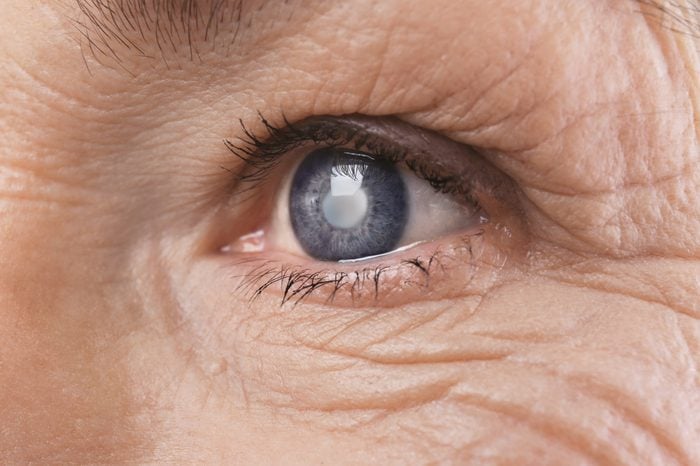
Glaucoma
The danger with glaucoma, a condition usually associated with aging, is that blurry vision and other symptoms usually don’t show up until the disease is more advanced, says Neeti M. Alapati, MD, assistant professor in the Glaucoma/Anterior Segment Services at Kansas University Medical Center in Kansas City. Glaucoma typically occurs in people over the age of 50 which is why annual eye exams are recommended after that age. “There’s no cure so we can try to slow down the progression,” she adds. This includes medication and laser procedures. The AAO has a program that offers free eye exams to qualified patients.
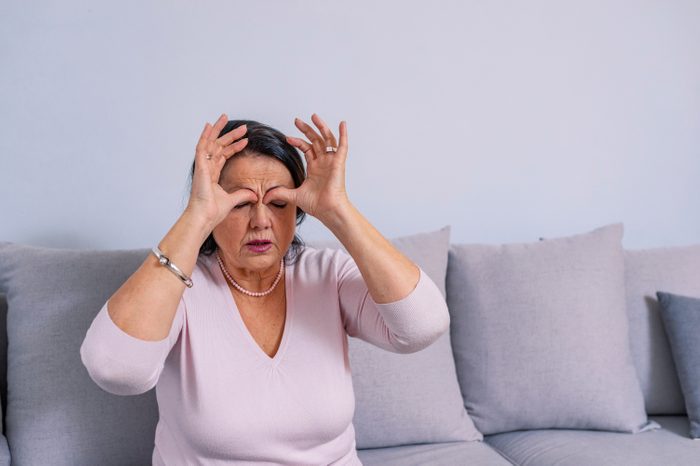
Age-related macular degeneration
This is another condition that becomes more common as you age, typically in people over 60, according to the National Eye Institute. It first affects your central vision, while glaucoma usually starts with changes to your peripheral (side) vision. “It basically causes distortion,” says Dr. Alapati. “Rather than lines looking straight, they’ll be wavy.” Like glaucoma, it has no cure, only treatments that can slow the progression of the disease. You can also cut your risk by following the two mainstays of a healthy lifestyle—healthy meals and exercise—as well as not smoking and wearing sunglasses that block out ultraviolet light, says the American Macular Degeneration Foundation.

Screens, screens, screens
Computers, smartphones, and tablets—these days, screens, in general, are a common cause of dry eye which is a common cause of blurry vision. According to the University of Washington, staring at a screen can slow your blink rate from 15 per minute to just seven, which means your eyes aren’t getting enough lubrication. Taking breaks every 20 minutes to give your eyes a chance to blink, says Meredith R. Klifto, MD, assistant professor of ophthalmology at the University of North Carolina School of Medicine in Chapel Hill. This is known as the 20-20-20 rule. Eye drops can also help but stay away from products that say “get the red out,” she adds. They can actually make the problem worse. Other causes of dry eye, according to the American Optometric Association, are hormones (in women), certain medications, health conditions like diabetes as well as wind and other environmental factors. Check out these 6 home remedies for dry eye to start finding relief.

Home improvement projects
“More eye injuries have now shifted to the home,” says Dr. Iwach. That’s because people aren’t wearing protective eye gear at home, whereas they’re more diligent at work. “With high-velocity tools, small fragments can get embedded in the tissue,” he explains. Children are particularly at risk—they’re just at the right height and they’re curious. Of course, any kind of eye trauma can cause blurry vision. Sports or recreational activities cause more than 40 percent of eye injuries and, overall, 78 percent of victims weren’t wearing any eyewear, including protective gear, when they were injured, according to the AAO. So: Wear protective eye gear, and keep in mind that blurry vision could be the least of your problems if you do experience eye trauma.

Allergies
Itchy, runny eyes are a classic symptom of allergies, but allergies can also cause blurry vision. “[Because of] irritation, oftentimes people rub their eyes and that can impact vision,” says Dr. Iwach. Seasonal allergies such as pollen and mold are the most common cause of eye symptoms, but indoor allergens (pet dander, for instance) are also culprits, says the American Academy of Allergy Asthma & Immunology (AAAAI). Fortunately, eye allergies are temporary and you can get relief with over-the-counter antihistamines and eye drops. The eye drops should be artificial tears (not “get the red out” versions) and preservative-free, stresses Dr. Klifto. Learn about natural remedies for allergies.
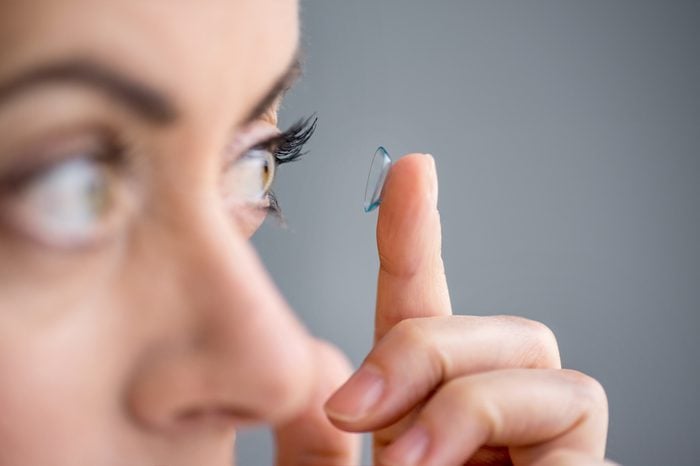
Contact lenses
If you’re taking care of your contact lenses and using them as instructed, you shouldn’t have problems. Stop using them correctly and you could develop blurry vision or even a corneal ulcer. Always clean and disinfect your contact lenses before putting them in your eye, throw them out when they expire, don’t sleep in daily wear lenses, and change your case at least every three months, says the AAO. If you’re in the mood for decorative lenses for Halloween or another special occasion, make sure you get them from an ophthalmologist. And make sure you have a pair of back-up glasses. If your eyes get irritated, you can take a break, says Dr. Iwach. And find out about contact lens mistakes you definitely don’t want to make.
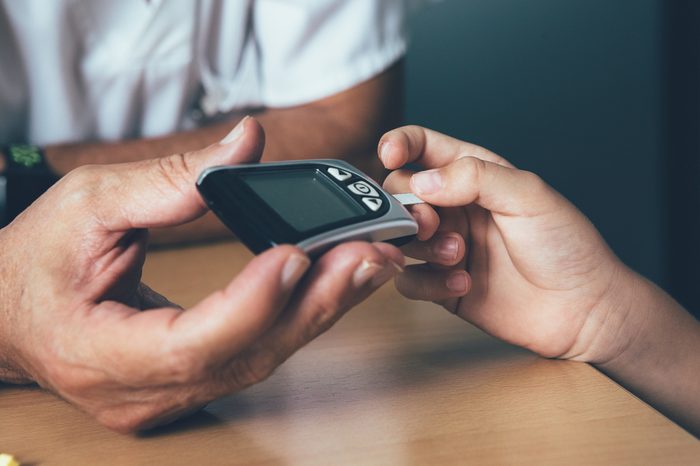
Diabetic retinopathy
Diabetic retinopathy can be a long-term complication of poorly controlled diabetes and it can cause blurry vision. It’s the result of chronically high blood sugar levels which erode the vessels in the retina, explains the National Eye Institute. Early diabetic retinopathy has no symptoms and the National Institute of Diabetes and Digestive and Kidney Diseases (NIDDK) recommends that people with type 2 diabetes see an eye doctor annually. There are treatments but no cure for diabetic retinopathy. Your best bet is to try to prevent it by controlling your diabetes, although this isn’t always enough. “Even if diabetes is controlled, you can over time develop diabetic retinopathy,” says Dr. Iwach. “The better you control your diabetes, it helps delay or reduce the risk but it’s not 100 percent.” Diabetes can also cause glaucoma and macular degeneration.

Herpes
Although infection with the herpes simplex virus (HSV) is more often associated with genital herpes and cold sores, it can also affect your eye and cause blurry vision, along with pain, redness, lesions around your eye and sensitivity to light, says Dr. Klifto. Like herpes in other parts of your body, ocular herpes lies dormant for periods of time then is activated, possibly because of stress or if your immune system has been weakened. Eye herpes is caused by HSV-1 which is the same virus that causes fever blisters. HSV-II causes genital herpes, according to the Kellogg Eye Center at Michigan Medicine. Once you have herpes, it never goes away, but outbreaks can be controlled with antiviral ointments or sometimes steroids, says Dr. Klifto.
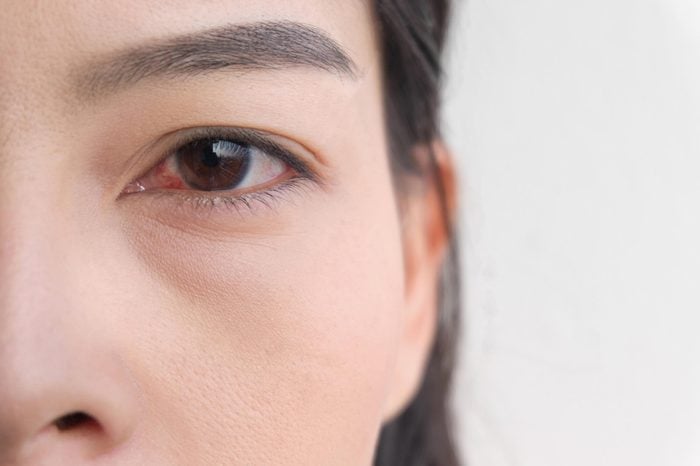
Pink eye (conjunctivitis)
Pink eye or conjunctivitis is an infection in the eye. Conjunctivitis can be caused by viruses, bacteria or allergies but viruses are most common, says the Mayo Clinic. It’s called “pink eye” because as your eyes become inflamed, they take on a red or pink hue. Also, says Dr. Klifto, “There’s a lot of tearing, redness, discharge, not just blurry vision,” says Dr. Klifto. Most cases of pink eye go away on their own in a week to two weeks, according to the CDC. But during that time it’s important not to spread the infection: Wash your hands often, don’t touch your eyes, don’t share towels and don’t share make-up. There are other symptoms of pink eye you shouldn’t ignore.

Cataracts
Almost everyone will get cataracts if they live long enough, says Dr. Iwach. Over time the lens of your eye gets cloudy making it harder to see. Blurred vision may be one symptom. “You may get blurry vision, which makes it difficult to drive at night, difficulty reading in dim light conditions, and a lot of glare,” says Dr. Klifto. Unlike glaucoma and macular degeneration, cataracts are curable. “It’s about a 20-minute outpatient procedure,” says Dr. Klifto. “They put in a new artificial lens that’s the perfect power for you based on measurements we take pre-operatively.” In other words, the procedure not only gets rid of the cataract, it often corrects your vision as well. Blurry vision is just one of several possible symptoms of cataracts.

High blood sugar
This is another potential complication of diabetes, but a short-term one. “High blood sugar in extremes can cause burry vision,” says Dr. Iwach. “Fortunately it’s not as common as it used to be.” According to Kaiser Permanente, high blood sugar causes excess water to collect in the lens which swells the lens beyond its normal size. Once you get your blood sugar down, it may take as long as six weeks to the swelling to totally subside, Kaiser explains. People with diabetes may also get blurry vision if they’re changing their medication, reports the NIDDK. This underlines the importance of keeping type 2 diabetes in check with proper diet, exercise, and medication.

High blood pressure
Similar to high blood glucose, high blood pressure in extremes can cause blurry vision. “You can have very high blood pressure and that can affect the refractive status of the lens,” explains Dr. Klifto. High blood pressure over time damages the small vessels in the eye, restricting blood flow to the area and damaging the retina (the structure in the back of the eye which receives light), according to the Merck Manual. This is just one possible result of chronic hypertension. Others include heart attack, stroke, heart failure, kidney disease, problems with sexual function, angina and peripheral artery disease, says the American Heart Association.
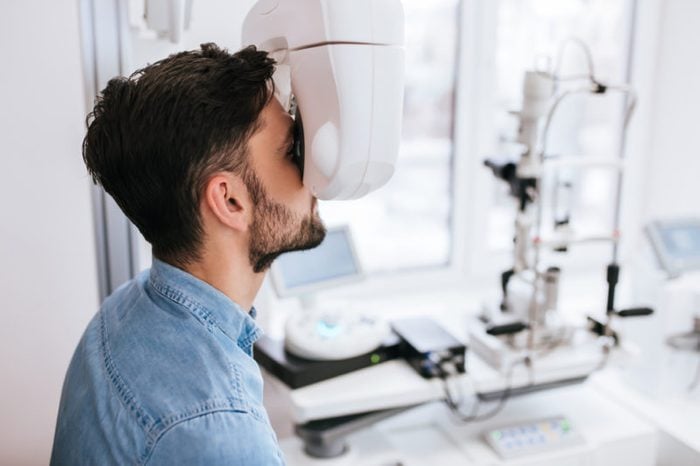
Refractive errors
According to the National Eye Institute, there are four main types of refractive errors all of which can cause blurry vision: nearsightedness or myopia (objects in the distance are blurry), farsightedness or hyperopia (objects nearby are blurry), astigmatism (images look blurry or distorted) and presbyopia which makes it hard for people to see things up close as they age. Fortunately, these are usually easily fixed. “The is the first thing to rule out [when you have blurry vision] and the most easily corrected,” says Dr. Klifto. Presbyopia and other refractive errors can be corrected with glasses, contacts or surgery, according to the AAO.

Migraine
Blurry vision can be part of the aura state that sometimes comes right before or at the beginning of a migraine, says Noah Rosen, MD, director of Northwell Health’s Headache Center in Great Neck, New York. Other visual symptoms can include zig-zag lines and double vision. “These tend to be transient and only in a brief period,” he says. Usually, these ocular symptoms aren’t dangerous (unless you’re driving). “Timing is important,” says Dr. Rosen. “Most of the time [visual disturbances] improve in five minutes to an hour and an average of 20 minutes, but if it’s prolonged it should probably be checked out.” There are many effective treatments for migraines.

